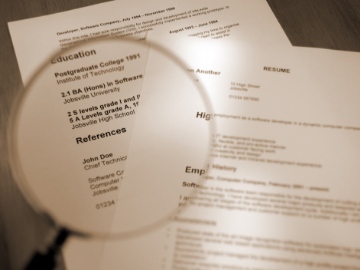Guide to Writing a Resume: Tailoring Your Resume Each Time

Whether it's the first time or after a recent job stint, deciding on a career can entail different implications. These include and often start with writing various resumes. When trying to get a job, there's no one-size-fits-all. So, it would be best if you tailored your resume.
Your relations with each job will differ because each company has specific demands. As a job hunter, you must cater to their needs, starting with a carefully crafted resume.
Guide to Writing a Resume
There are many ways for you to write a resume. But there are several practices you can follow for the best results. The number one point in this guide to writing a resume is never to have just one version. Don't get complacent, thinking one resume is good enough for all the companies you'll apply for. The idea of one perfect resume is a mistake. Again, one size doesn't fit all.
It's important to think about your audience. Get to know the company you're eyeing and begin tailoring your resume. Adjust it to suit their culture, style, and practices. Doing so will give you a better chance of getting the hiring officer's attention.
You can have similar resumes, especially if you're applying for the same job. But it's crucial to keep it job specific. A great resume can address the specifics of a job description each time. Each company is unique, and your resume should adapt to that.
Many jobs are also alike. But hiring officers prefer those who seem to be the best fit for the company. Remember that they use search criteria to find the best candidate based on the job description. That's why tailoring your resume for each job application is still the best way.
Tailoring Your Resume: Why Should You Do It?
There are way too many reasons why you should be tailoring your resume. Besides boosting career growth, the following points below are why you should tailor your resume.
-
To get through technology
Companies are specific with what they want. But sometimes, there are too many resumes to go through. It makes it difficult for hiring officers to find the best people for the job. That's where technology comes in handy.
When you send out resumes online, you give recruiters access to them. These resumes will appear when a match occurs and pass the initial test. A system helps by matching what a company wants and what resumes complement it. Present yourself with how the company wants to ensure your resume is part of the matched list.
-
To get the attention of the recruiter
Once your resume makes it through the first screening, the next part is getting the recruiter to notice you. Since this is no longer a machine that will pick you out of the bunch through keywords, your resume should be able to speak for itself. You have about six to seven seconds to do this. Be sure to beef up your resume by putting in your skills, accomplishments, and experiences. Doing so will prove your value.
Another tip in this guide to writing a resume is not to lie. Although you want to put your best foot forward on paper, you must stay honest. Stick to facts, highlight your strengths, and how you can add value to the company. These should be enough for the recruiter to give you a shot at an interview.
-
To make an impression on the hiring manager
When your resume reaches the last stop, it must give a wow factor. The hiring manager decides if you'll get an interview. So, you must impress this person. It would help if you expressed interest while showing off your skills.
Getting an Interview
This guide to writing a resume showed that there shouldn't be a single resume for all the jobs you apply for. Tailoring your resume is the way to match a company's job description and lead you to the next steps.
Keep in mind that the best and most powerful resumes are the ones that score you an interview. Ensure a spot in the shortlisted candidates by knowing more tips for your career search. Check out Career.com.


